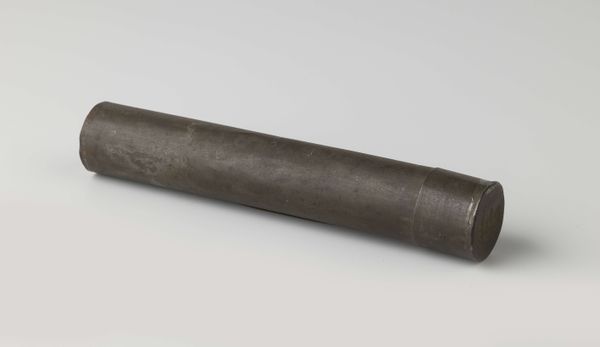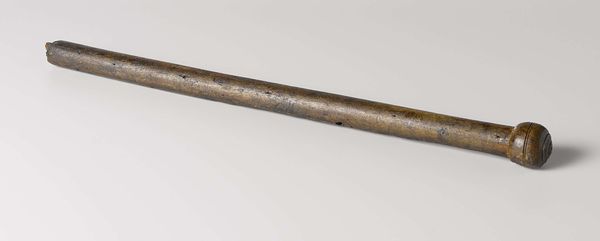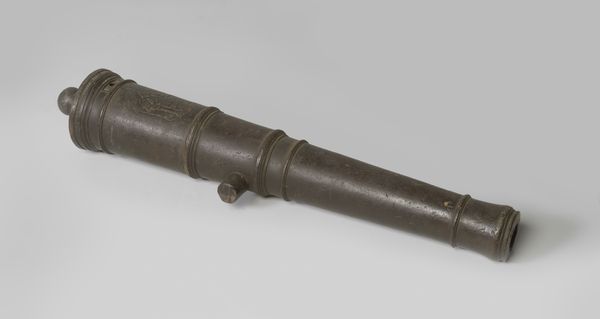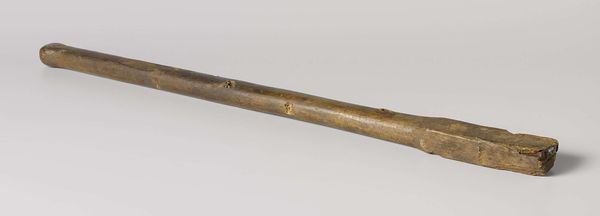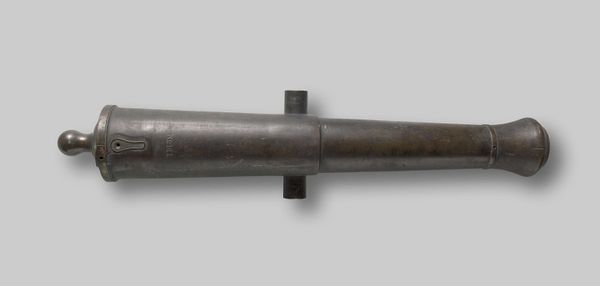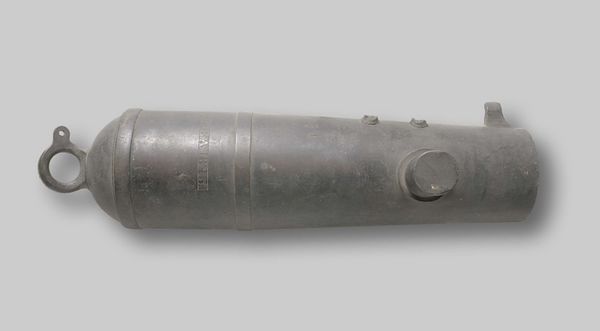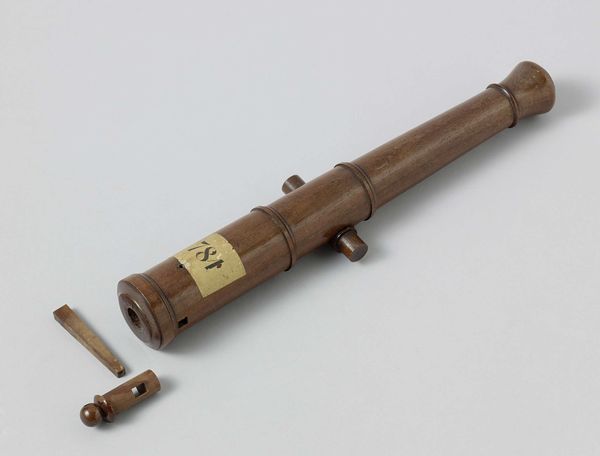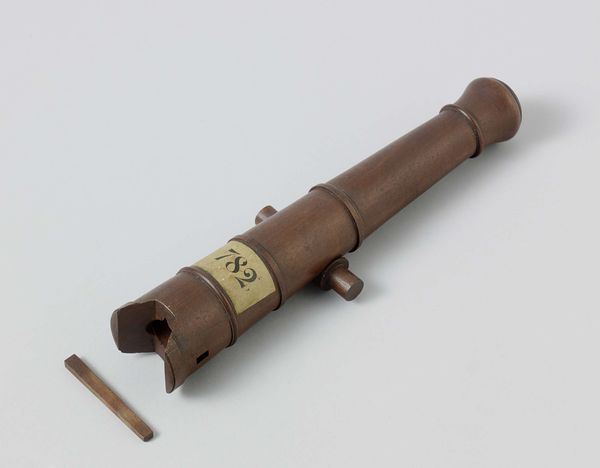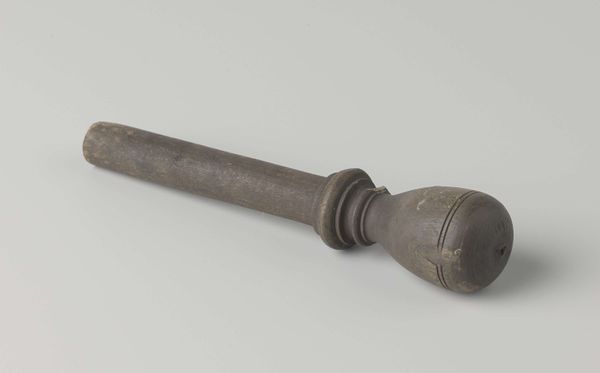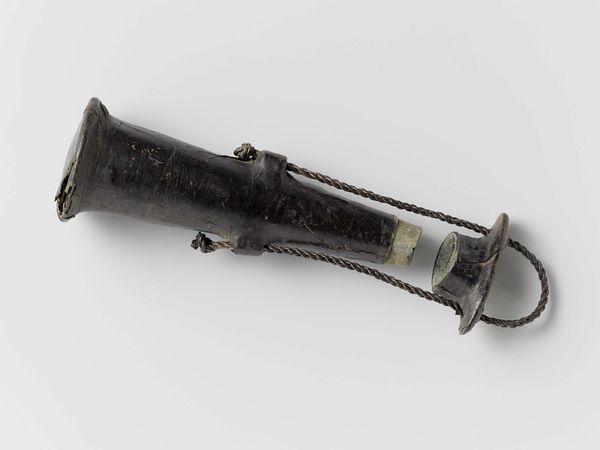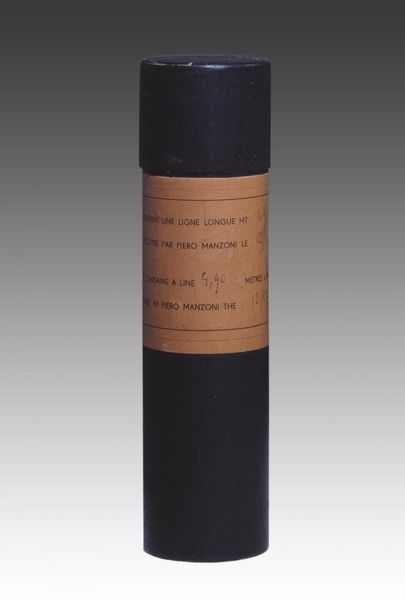
metal, bronze, photography
#
still-life-photography
#
metal
#
bronze
#
photography
#
geometric
#
realism
Dimensions: length 15.2 cm, diameter 3 cm
Copyright: Rijks Museum: Open Domain
Curator: This is a photograph titled "Sample of Iron with Galvanised Copper," dating from around 1866 to 1870, by an artist known only as Bernabé. Editor: Well, isn’t that wonderfully unassuming! I see something almost lunar in its surface, despite the industrial materials. Like a small, quiet world caught on film. Curator: The photograph certainly embodies the 19th-century interest in industrial processes, capturing the textures and forms created through the galvanization of iron. Consider the cultural embrace of new technologies that's evident even in what may seem like an utterly humble document. Editor: I’m struck by the quiet poetry within these stacked cylinders—the tarnished copper segments bookending that middle section of rougher galvanized iron. I feel almost transported to an alchemist's lair! Or maybe a very precise steampunk laboratory? Curator: Exactly. And note that Bernabé chooses a very straightforward, almost scientific approach to composition here, prioritizing clarity and detail above any artistic flourish. It speaks to photography’s emerging role as a tool for documentation. The emphasis isn't so much on self-expression but recording a precise instance in material processes. Editor: Still, that metallic sheen elevates it beyond pure record. The interplay of light transforms base materials into something captivating, giving you permission to just be still with textures and subtle patinas. Doesn’t it feel almost like a miniature landscape? Curator: It does make you consider the broader economic and industrial contexts shaping photographic representation during this period, doesn’t it? The rise of industry influenced aesthetics and even how art was valued and consumed, moving us toward mechanical reproduction and documentation as the key to what’s deemed artistically important. Editor: Looking closely, there’s also the patina and what might be considered small imperfections—nods to the beauty that rises from natural changes and, possibly, by-products of the actual treatment of materials themselves. A touch of decay adding to the character of what's being depicted, as if it possesses its own unique story. Curator: Absolutely. That interplay highlights the collision between manufactured objects and the slow creep of natural processes—something photographers like Bernabé would continue to investigate through photography as a means of archiving material transformations and labor. Editor: Seeing all this—the textures, subtle colour gradations—really opens the mind to celebrating not only the grand but the understated moments. In just documenting the humblest manufactured item, there exists an entire artistic universe, just begging for appreciation! Curator: Indeed, a reminder that artistry lies as much in observation and the careful recording of processes as it does in traditional aesthetic creation.
Comments
No comments
Be the first to comment and join the conversation on the ultimate creative platform.
